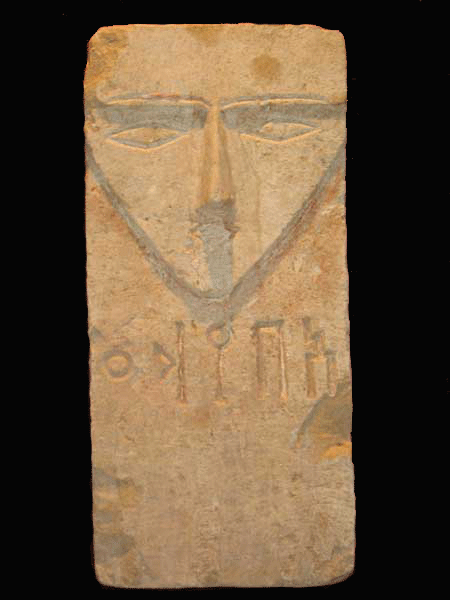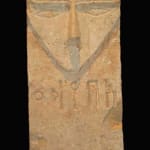Sabaean Funerary Stone Plaque, 400 BCE - 300 BCE
limestone
X.0209
The ancient kingdom of Saba ruled over the lands of southern Arabia, centered in modern day Yemen. Saba is perhaps better known as Sheba, the Hebrew word for the kingdom,...
The ancient kingdom of Saba ruled over the lands of southern Arabia, centered in modern day Yemen. Saba is perhaps better known as Sheba, the Hebrew word for the kingdom, whose famous Queen was recounted as having visited Solomon in the pages of the Old Testament. Biblical accounts speak of the wealth of this ancient civilization of traders and merchants, and modern archaeological excavations confirm these reports. Ruins of fortresses and walled towns are evident and remnants of their extensive irrigation system that turned the desert into a paradise still cover the land. Although gold and silver deposits were present, the chief source of their vast wealth was derived from their veritable monopoly of two of the most coveted materials in ancient times: frankincense and myrrh, resinous gums obtained from certain trees that only grow in Southern Arabia and were literally worth their weight in gold. There was not a temple or wealthy house in the ancient world, from Babylon to Rome, where one would not smell the fragrant scents of these incenses. In addition, a trade route that connected India to Egypt that passed through their capital of Marib was another major source of wealth.In the 1st Century A.D., the Ptolemaic Greeks discovered a sea route from India directly to the port of Alexandria, eliminating Saba from her lucrative trade and ushering in the decline of Sabean prosperity.
This magnificent stone funerary plaque is a stunning example of the sophistication of Sabean art.
In the upper half of the stela, a formal, almost triangular face in shallow bas-relief, of a type known from the Qatabanian Timna cemeteries. In the lower half, one line of text with five letters giving the name of the deceased: 'b-ydC : Ab-yadaC'. The name is well-known and widely attested in five of the ancient Arabian dialects, mostly clustering within the ancient kingdom of Main (c.600-100 BC), just north of Sheba/Saba. With only modest serifs and not overly tall forms, the lettering of this piece may well date to about the 5th-4th centuries BC.
For related works see the head set in a Marib stela of the 5th-4th centuries BC in Sanaa Museum. See C.Robin et al, Yemen, Au Pays de la Reine de Saba, Paris, 1997: p.167, top.
Also, Cleveland, R.L. An Ancient South Arabian Necropolis, Baltimore, 1965: pl.38.
And, Harding, G.L., Index and Concordance of Pre-Islamic Arabian Names and Inscriptions, Toronto, 1971: p.18.
[Translation, attribution and partial text by Prof. K.Kitchen, University of Liverpool]
This magnificent stone funerary plaque is a stunning example of the sophistication of Sabean art.
In the upper half of the stela, a formal, almost triangular face in shallow bas-relief, of a type known from the Qatabanian Timna cemeteries. In the lower half, one line of text with five letters giving the name of the deceased: 'b-ydC : Ab-yadaC'. The name is well-known and widely attested in five of the ancient Arabian dialects, mostly clustering within the ancient kingdom of Main (c.600-100 BC), just north of Sheba/Saba. With only modest serifs and not overly tall forms, the lettering of this piece may well date to about the 5th-4th centuries BC.
For related works see the head set in a Marib stela of the 5th-4th centuries BC in Sanaa Museum. See C.Robin et al, Yemen, Au Pays de la Reine de Saba, Paris, 1997: p.167, top.
Also, Cleveland, R.L. An Ancient South Arabian Necropolis, Baltimore, 1965: pl.38.
And, Harding, G.L., Index and Concordance of Pre-Islamic Arabian Names and Inscriptions, Toronto, 1971: p.18.
[Translation, attribution and partial text by Prof. K.Kitchen, University of Liverpool]



